- info@sintaductrodder.com
- +86 158 3195 8550

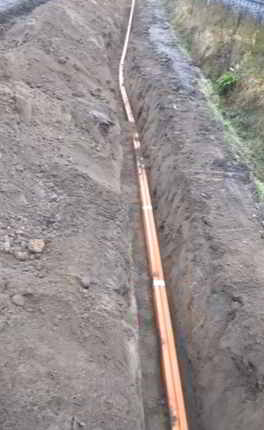
♦ Avoid lots of sites that contain severe acid or alkali corrosion or stray current electro-chemical corrosion.
♦ When there is no protective measure, it is advisable to avoid the termite damage zones, the influence of heat sources and the sections that are easily damaged by external forces.
♦ Cables shall be laid in trenches, and soft soil or sand layers with a thickness of not less than 100 mm shall be laid along the upper and lower adjacent sides of the full length of the cables.
♦ The protective plate with a width of not less than 50mm on both sides of the cable shall be covered along the entire length of the cable. Concrete shall be used for the protective plate.
♦ When the cable is laid directly, it is advisable to lay a wake up target band on the protection board.
♦ In the suburbs or in open areas, obvious azimuth signs or stakes should be erected along the straight-line interval of 100 m along the cable route, at turning points or at joints.
♦ When the cable corrugated pipe is laid in the trench, the prime concrete with a thickness of not less than 100mm should be poured along the entire length of the corrugated pipe, and the width should not be small.
On the outside of the tube 50mm, the cable may not contain armor.
♦ The base of cable sheathing to underground structures shall not be less than 0.3m.
♦ The depth of the cable jacket to the ground shall not be less than 0.7m; when it is located in the carriageway or under the cultivated land, it shall be properly deepened and shall not be less than 1.0m.
♦ 3.When buried directly in permafrost areas, they should be buried below the permafrost. When they cannot be buried deeply, they can be buried in dry permafrost where the soil is well drained or In the backfill soil, other measures to prevent damage to the cable can also be taken.
♦ When laying large logarithm plastic plastic cables, install a traction head at the end of the cable. The traction head should be well sealed to prevent the water from entering the end of the cable. The traction cable ends should be tied tightly, and the connecting device such as iron swivel should be installed between the cable net cover and the traction wire rope so that the all-plastic cable will remain straight during the traction of the pipe hole, and no twisting phenomenon will damage the cable. Cover.
♦ When laying pipeline cables in the park, because the number of cables is not large and the pipeline section is long, the mechanical traction cable construction method should be adopted as far as possible. In a last resort (such as the road is too narrow, the operation space is very small) Traction. The pulling force of the traction cable should be uniform and should not be yanked tightly. The traction force of the plastic cable should be less than 80% of the allowable pulling force of the plastic cable.
♦ Lubricants such as talcum powder and paraffin oil must be used on the outer sheath of the cable in the pipe hole to reduce the frictional resistance. However, the use of organic lubricants is strictly forbidden to damage the plastic sheath. When laying cables, there may be areas where the cables may be scraped, dragged, smashed, or ground. Steel tiles, miscellaneous cloths, or pad bent irons should be used for protection. Special personnel should check the outer surface of cables at any time. Damage and no scratches, no creases in the cable bend.
♦ When laying cables, pay attention to moisture prevention and take appropriate measures, such as keeping the water in the manhole or hand hole dry.
♦ When the cables are to be laid continuously through multiple sections of hand holes or manholes, the cables must not be hung in the middle of the hand holes or manholes, or they must be worn through the hand holes or manholes. The cables should be in each hand hole or person. Leave sufficient allowance in the hole, place the cable on the tray of the cable holder, and tie it with a cable tie. The length of the cable at the connection between the hand hole and the manhole should be reserved.
Communication, electricity and transport lines often require the installation of underground cables in order to obtain high-level performance and low impact on the environment. Underground cables need stringing equipment capable of operating under any condition, always providing good performance, high power and working accuracy. To install underground cables are designed and built to ensure the highest performance in terms of quality and resistance.
Underground cables are, means the rodder to be installed or laid below the ground. It is important that the proper lying of the cables, the cable joins quality and the branch connections, it directly affect the underground cable network’s reliability.
This method is the most popular because it is simple and inexpensive. Cables placed using this method must have a portion of tar paper and burlap tape to prevent corrosion and electrolysis. The direct laying procedure is as follows.
First, install a about 1.5 meters deep and 45 centimeters wide trench.
Then, the trench covers a layer of 10 cm thick fine sand.The cable is placed on the sand bed which can protects the cable from the moisture on the floor.
Finally, cover about 10cm thick sand as a layer above the cable.
When multiple cables must be placed in the same groove, a horizontal or vertical spacing of about 30 cm is provided to reduce the effect of mutual heating. The space between cables also ensures that failure of the cable will not damage adjacent cables.
Grooves are covered with bricks and soil to protect the cables from mechanical damage
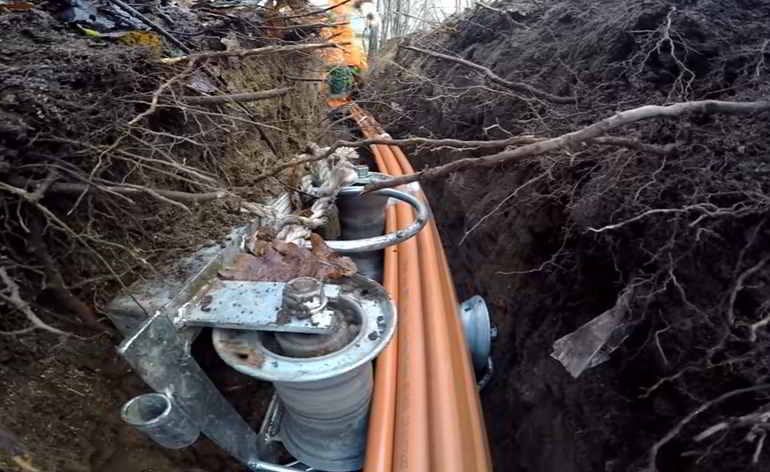
In this way, cast iron or concrete pipes or ducts are placed underground with cable rollers at appropriate positions along the cable path. Then, the cables are introduced into the pipes of the manholes. In general, an additional pipe / duct is also provided together with the three cable ducts to carry relay protection connections and pilot cables. The distance between the manholes should be such that pulling the cables is easier. At corners or when changing the direction of the route, the radius of the corners must be longer. The cables that are to be laid in this way do not need to be shielded, but must be provided with a portion of burlap and jute to protect them when pulling them.
In this method, the cable is placed in a trough made of cast iron, stone, asphalt or treated wood. When the cable is in place, the channel is filled with asphaltene asphalt and then covered. Cables placed in this way can simply be covered with lead because the channels provide good mechanical protection.
This method is seldom used because it cost high, requires skilled labor and good weather conditions.
If you have no experience of pulling wire through conduit, it looks like a problem. How can you get the cable through the duct, especially when the duct is hundreds of feet long? Unless the catheter is very short and/or very straight, it is difficult to push it out. Of course, it will not only climb over the pipeline itself. Dry and bare wiring introduced through conduits (especially PVC conduits) creates friction, which makes pulling cables more difficult.
There are some basic tools and supplies that can help the cable pass through the conduit.
The most common tool for pulling a wire through conduit is the fish tape. Fish tape is an electrical tool that wraps a long, flat wire inside a wheel coil. There is a hook at the end of the tape. Feed this end to the end of the catheter and then push the ribbon into the conduit and withdraw from the spindle at any time.
When the tape reaches the other end of the conduit, the cable is secured to the belt hook and the cable is then pulled back into the conduit. Fish tapes are widely available and range in length from 25'. There are also nylon tapes that do not contain reels; these may be the most economical option when you need a fish tape for small work.
Most electricians generally use the fish tape to pull the cables after installation. This is actually much easier than trying to connect the conduit in the cable and attach it.
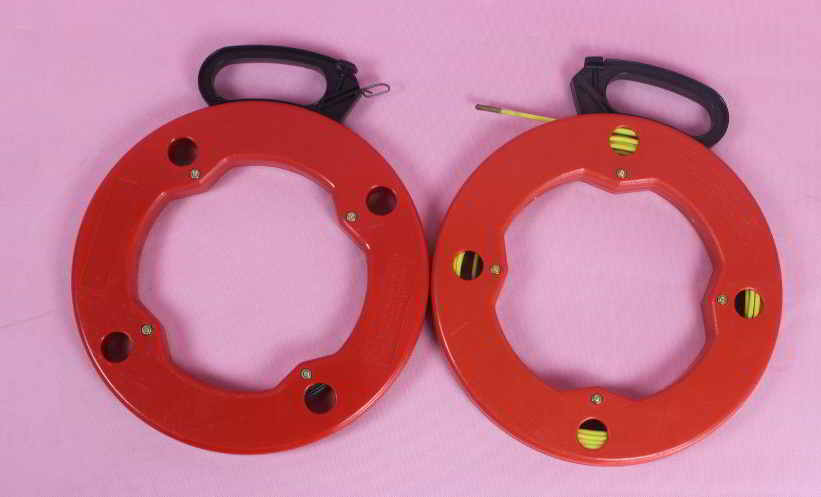
 Duct Rodder
Duct rodder, it is an excellent cable pulling tool. Smooth and resilient surface allows the piercer easily pass through the narrow pipeline. Commonly used in telecommunication pipeline cleaning.
Duct Rodder
Duct rodder, it is an excellent cable pulling tool. Smooth and resilient surface allows the piercer easily pass through the narrow pipeline. Commonly used in telecommunication pipeline cleaning.
 Fiberglass Duct Rodder
Fiberglass duct rodder, It is an auxiliary tool for cable laying in pipelines, and can collect cables conveniently. It is ideal for electrical wire pulling works.
Fiberglass Duct Rodder
Fiberglass duct rodder, It is an auxiliary tool for cable laying in pipelines, and can collect cables conveniently. It is ideal for electrical wire pulling works.
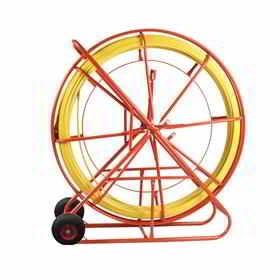 Cobra duct rod
Cobra duct rod is also named cobra conduit rod. It is widely used in various kinds of electric cable pulling pipe line project
Cobra duct rod
Cobra duct rod is also named cobra conduit rod. It is widely used in various kinds of electric cable pulling pipe line project
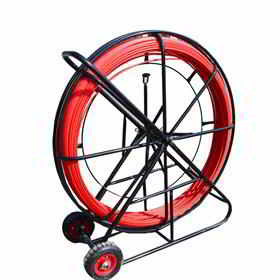 Traceable duct rodder
Traceable duct rodder is a unique type duct rodder with cooper wire inside, which can allow users follow and find the duct rod's route easily.
Traceable duct rodder
Traceable duct rodder is a unique type duct rodder with cooper wire inside, which can allow users follow and find the duct rod's route easily.
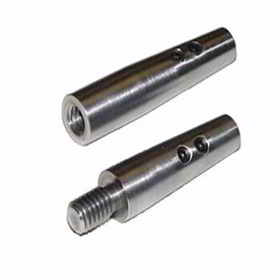 Duct Rodder Accessories
Duct rodder repairt kit of duct rodder includes 5 pcs accessories, drawing head, rod grapple, flexible leader, roller guide, and swivel coupling. The accessories make the cable running easy and simple.
Duct Rodder Accessories
Duct rodder repairt kit of duct rodder includes 5 pcs accessories, drawing head, rod grapple, flexible leader, roller guide, and swivel coupling. The accessories make the cable running easy and simple.
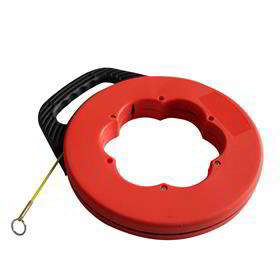 Fish Tape
Fish tape is an ideal tool widely used by an electrician to route through electrical conduit or walls for wires pulling.
Fish Tape
Fish tape is an ideal tool widely used by an electrician to route through electrical conduit or walls for wires pulling.
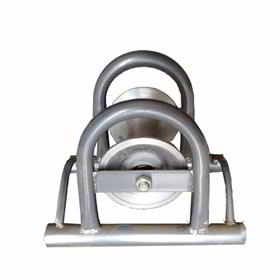 Cable Rollers
Cable rollers are widely used to protect cable from damaged in the field of construction during the cable-laying.
Cable Rollers
Cable rollers are widely used to protect cable from damaged in the field of construction during the cable-laying.
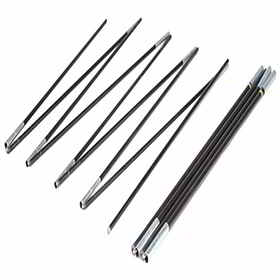 Push Pull Rod
Fiberglass push pull rod is a tooll used for pushing or pulling the wire, cable easily through pipeline or crawl spaces etc. It is widely used in construction, residential electrical and commercial industries. It is excellent for hard to reach places
Push Pull Rod
Fiberglass push pull rod is a tooll used for pushing or pulling the wire, cable easily through pipeline or crawl spaces etc. It is widely used in construction, residential electrical and commercial industries. It is excellent for hard to reach places
Main Products
Tell Me What by wechat
